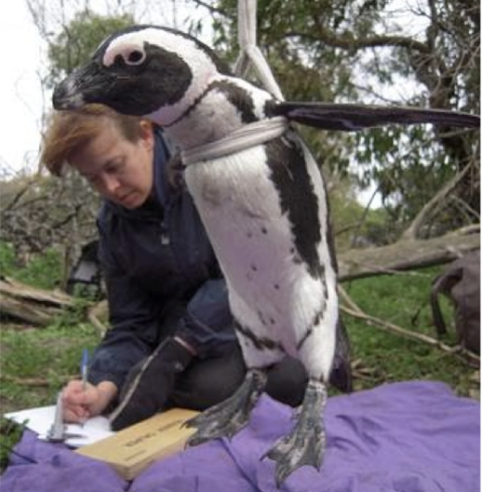.
What Earthwatchers Do with Their Summer Vacation
We Know What You Did This Summer–Because You Told Us!
One of the great annual traditions at Earthwatch is the flood of enthusiastic, inspirational, first-person reports that come in from so many volunteers, fellows, and researchers during our busiest fielding months, typically June through September. If the organization ever needed to answer that traditional classroom question, “What did you do on your summer vacation?” (or “holiday,” as you prefer), we’d be all set. And with more and more Earthwatchers using mobile devices and laptops in the field to post to blogs, video sites, picture sites, and more, it’s getting easier to see all the fun and hard work that’s going on all over the world, almost as it happens.
(And when Earthwatchers tweet from the field and use #globaltweet, others can see where that work is making an impact on the Global Tweets map.)
So, in the grand blog tradition of “link-blogging,” we thought we’d use this (North American) Summer Edition of Earthwatch Unlocked to bring you the “Best of Earthwatchers’ Blogs, June-August, 2012”—with immediate apologies to any and all we’ve somehow missed or left out. The links below will take you direct to Earthwatch volunteers, corporate fellows, educator fellows, students, and researchers talking in their own, unedited voices about why they’re spending time (and money, and sweat!) on our various expeditions, what they’re learning, what they hope to accomplish—and how much fun they’re having a along the way.
In no particular order, then, let’s hit the links!
.
Look: Leopards!
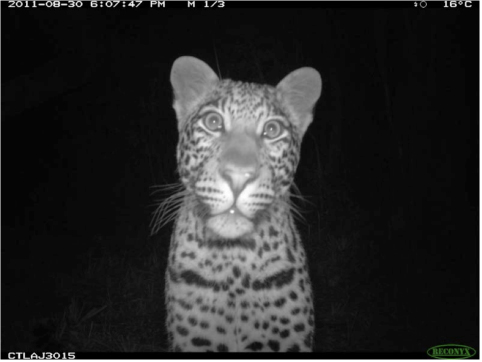
© Kathy Standish, Primate and Predator Project, 2012
Dr Russell Hill, Sam Williams, and Katy Standish, all of Durham University (UK), have put together a fantastic blog—you won’t believe some of their camera-trap photos—about their work with the Leopards, Hyaenas, and Primates: Mammal Conservation in South Africa Earthwatch Expedition and their Primate and Predator Project at Lajuma Research Centre.
.
The Art—and Sweat—of Stewardship: Students as Teachers, Teachers as Learners
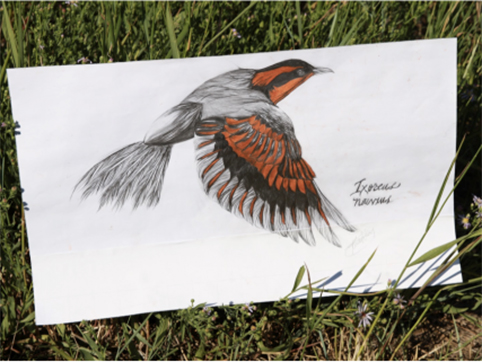
An outstanding colored sketch of a varied thrush by Kirsten, a 2012 Teen Team volunteer © the artist and Earthwatch.
Earthwatch has had a long, productive, fun partnership with the researchers and staff at the Teton Science Schools in Jackson Hole, WY, an extraordinary site for learning-by-doing that is home base for the Expedition we now call Spirit of the Rockies: Songbirds, Mountain Lions, and More.
This summer, we’ve been lucky enough to get not one, but two, amazing blogs from the Earthwatch teams of student and teacher fellows who journeyed there. Read them side-by-side and you’ll be struck by the commonality of the experiences as students and teachers alike struggle with unfamiliar territory, challenging days in the field, mastering scientific and technical knowledge, finding good group dynamics, feeling homesick (or just tired), and even staying clear of unpleasant encounters with local flora and fauna. (Sorry ‘bout that yellow jacket sting, David!) See how each group overcomes these obstacles and finds themselves discovering entire new worlds—and how to care for them:

The Spirit of the Rockies LA Student Fellowship Team, a grand group in front of the Grand Tetons, July 2012. © Earthwatch
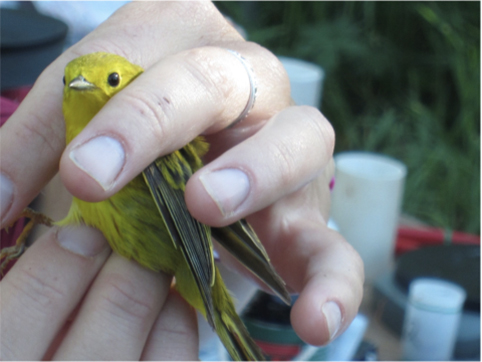
This yellow warbler was in the good hands of an Earthwatch Educator Fellow this summer.
© Jennifer Giuffre and Earthwatch, 2012.
.
She Snorkels Sustainably by the Sea Shore for Science
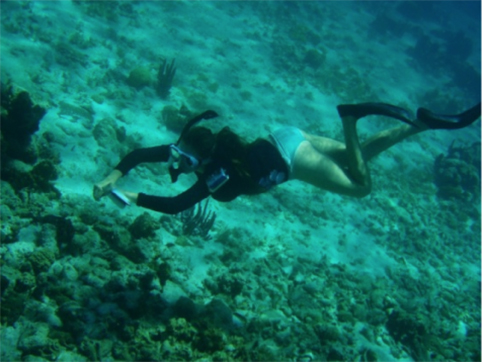
A 2012 Earthwatch Teen Team volunteer surveys a patch reef in The Bahamas. © Earthwatch
Summer school usually sucks.
Not this time. At least, not for Sue Hee (Sophie) and her fellow Teen Team volunteers on our Better in The Bahamas: Making Marine Reserves Work expedition, which partnered once again with The Island School at the Cape Eleuthera Institute. Sophie’s blog gives you a great peak into what it’s like for teens from all over to unplug, get into the pace of island life, and get some amazing conservation science experiences. At this summer school, the only thing that sucked was the bug bites.
.
Hey, These Gap Teeth Let Me Make My Trademark Whistle!

© Marmot Wikimedia Commons
This one’s not a blog of a particular Earthwatch team’s expedition experience, but we’re suckers for cute furry mammals that might be holding the secrets to how climate change is affecting the Alps.
One of our newer expeditions (with apologies to Steinbeck…), Of Mountains and Marmots: Climate Change in the French Alps is lead by Drs. Aurélie Cohas and Sophie Lardy and their colleagues in the Alpine Marmot Project. Check out their blog to start learning about Marmota marmota, and we bet you’ll be feeling an urge to head for the hills to see what’s happening to their population and habitat.
.
From A Vancouver Cubicle to Brazil’s Forests: Earthwatch Corporate Fellow Redefines Day at the Office
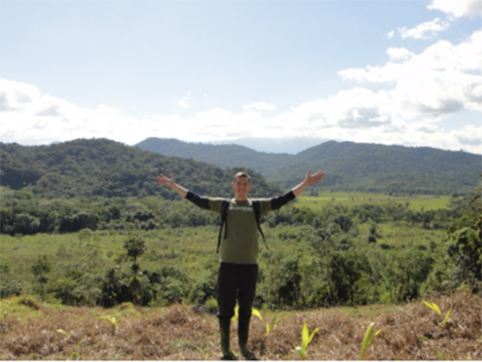
Look! No spreadsheets! An Ernst & Young Earthwatch Fellow savors the assignment in 2012.
© Byron Chard and Earthwatch (from The Vancouver Sun’s Community Blogs)
Scientists, student fellows, educator fellows, and volunteers aren’t the only types of Earthwatchers who’ve been “out there” in the field this spring and summer—far from it. Our various corporate or employee fellows, from a wide range of partners in multiple business sectors, comprise one of our fastest growing and most important parts of the Earthwatch community. Sponsored by their employers and/or their businesses’ charitable foundations, these Earthwatch Corporate Fellows partner with us and with local communities, NGOs, non-profits, and sustainable businesses near our various field research projects.
Stepping out of their day-to-day jobs, these Fellows get hands-on sustainability experience (often for the first time), advance conservation science, share their relevant business skills with local partners (often helping spread best practices that will empower local conservation, eco-tourism, or heritage preservation efforts), and return to their jobs with the knowledge, motivation, and inspiration to be “agents of change.”
(That’s right: we’re seeding Earthwatchers in cubicles, board-rooms, factories, and anywhere else we can get them. Shhh.)
We love reading the reflections of these “corporate bloggers,” as they’re often the ones for whom an Earthwatch Expedition is the most life-changing of experiences. Byron Chard’s blog, recounting his adventures as an Ernst & Young Earthwatch Fellow in Brazil, is no exception. In fact, it’s one of the best examples of this genre. Divetir-se!
.
(Or, Join an Earthwatch Expedition and Learn How to Pick Up Chicks)
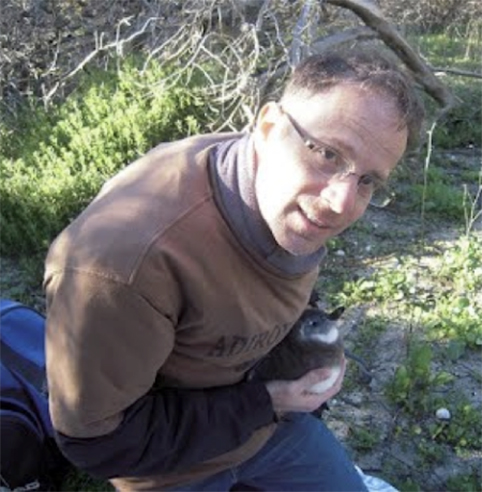
The blogger gets some cuddle time. © Douglas Poggioli
Many Earthwatchers make their expedition experiences part of a longer sabbatical during which they explore travel, career, and service opportunities. Few of these involve feeding pureed pet food to baby penguins, so we’re honored to be included in UK volunteer Douglas Poggioli’s world wide walkabout.
Douglas joined the team on our South African Penguins expedition this July, on historic Robben Island, and gives a warm and informative account in this blog of the research goals, the day-to-day work, the surroundings, the dedicated and capable researchers, and these unique seabirds, the only penguin species native to Africa’s coast.
.
Bear Crossing
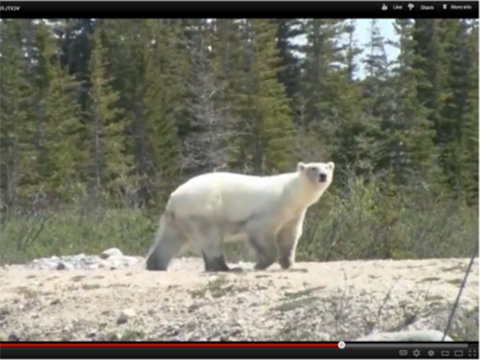
.
Okay, we’re cheating on this last one a little, since it’s not only not a blog, but it’s also from last summer, as a group of Earthwatchers on the way back from field work to the Churchill Northern Studies Centre while on our Climate Change at the Arctic’s Edge expedition had a close encounter of the ursine kind. But it was new to us, a few weeks ago, and it’s amazing—so there’s no harm.
(Which, in a video involving a polar bear, is something you always want to be able to say…)
And since we can’t bear to try to top that, that’s it for this edition of Earthwatch Unlocked. Hope you enjoyed this tour around the world with Earthwatchers’ blogs and vids, from the Arctic Circle, to the Grand Tetons, to The Bahamas, to Brazil, to the French Alps, to South Africa—don’t say we never take you anywhere! Until next time—remember to find us on Facebook, follow us on Twitter, and keep helping us spread the word about all the ways you’re unlocking potential with Earthwatch.
.
Sign up for the Earthwatch Newsletter
Be the first to know about new expeditions, stories from the field, and exciting Earthwatch news.
